How Pallet Inverters Solve Warehouse Space Constraints and Fast-Growing Exports in Vietnam?
Your business in Vietnam is growing fast. Orders are flooding in, especially for export. This is fantastic news, but it brings a new set of problems. Your warehouse, which once felt spacious, is now packed to the ceiling. Every day, your team struggles to manage inventory and prepare shipments, wasting precious time manually moving goods from one pallet to another. This manual process is not just slow; it’s a bottleneck that chokes your entire operation, risking product damage and delaying critical export orders. It feels like your own success is creating the barriers to even greater growth. What if there was a single machine that could reclaim your warehouse space, slash your labor costs, and accelerate your export process all at once?
A pallet inverter solves warehouse space constraints by enabling a dual-pallet system, where you use high-quality internal pallets and switch to cheap, space-saving export pallets only when needed. For Vietnam's fast-growing exports, it drastically speeds up logistics by automating the transfer of goods, ensuring compliance with international standards like ISPM-15, minimizing product damage, and reducing labor dependency. This single solution directly addresses the core challenges of warehouse capacity and export efficiency.
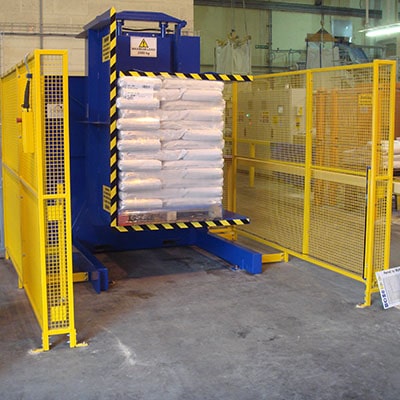
This might sound like a simple fix, but the impact on your bottom line is significant. As an engineer who has spent his entire career in the packing machine industry, I've seen firsthand how a strategic piece of equipment can transform a business. It’s not just about moving boxes from point A to point B. It's about creating a smarter, more efficient workflow that saves you money and opens up new capacity. Let’s dive deeper into how this machine works and how it can specifically help your operations in Vietnam.
How can a pallet inverter directly maximize warehouse space?
Your warehouse floor is some of the most valuable real estate your company owns. Yet, a significant portion of it might be occupied by stacks of empty shipping pallets. You keep them on hand because you need them for exports, but they are bulky and get in the way. This forces you into tough choices: Do you rent expensive off-site storage? Or do you limit your production because you simply don't have the space to store finished goods? It's a constant pressure that eats away at your profitability and operational agility. A pallet inverter offers a practical solution by fundamentally changing how you manage and use your pallets, freeing up space you thought was gone for good.
A pallet inverter maximizes warehouse space by allowing you to adopt a "pallet-on-demand" strategy. You can use durable, high-quality plastic or metal pallets for all your internal movements and storage. These pallets are perfect for your racking systems and automated conveyors. Then, just before shipping, you use the inverter to swiftly transfer the entire product load onto a cheap, lightweight wooden pallet or even a slip-sheet for export. This eliminates the need to store thousands of bulky shipping pallets, instantly reclaiming valuable floor space for production or inventory.
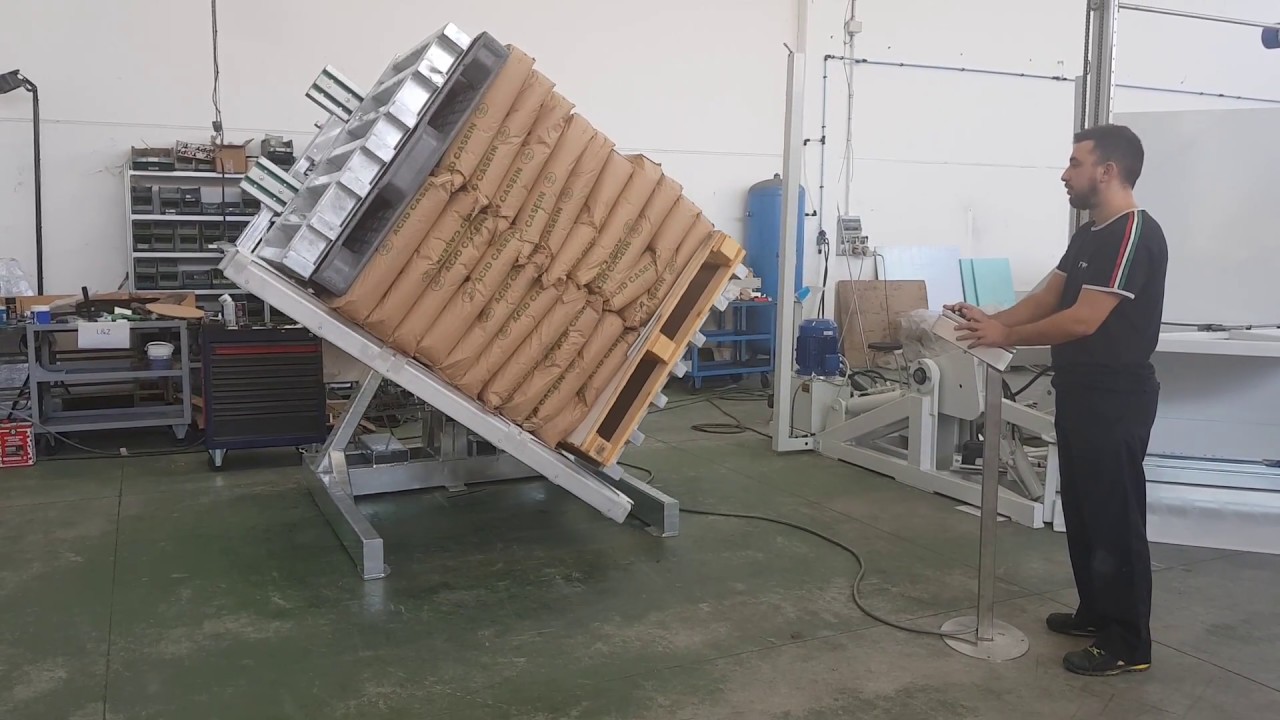
The Power of a Dual-Pallet System
I remember a client in the electronics industry near Da Nang. Their warehouse was immaculate, but they were struggling. They had thousands of high-quality plastic pallets for their sensitive components, but they also had to store an equal number of wooden pallets for their American and European clients. The wooden pallets took up nearly 15% of their floor space.
We introduced them to the dual-pallet concept. Their internal operations would not change. They would continue using their excellent plastic pallets. But now, at the shipping dock, a single pallet inverter would perform the transfer. The operator would place the loaded plastic pallet into the machine, which would then clamp the load, rotate it 180 degrees, and allow the plastic pallet to be removed from the top. Then, an export-ready wooden pallet was placed on top, and the machine rotated back. The whole process took less than 90 seconds. The result? They freed up hundreds of square meters of space and eliminated the logistical headache of managing two separate pallet inventories throughout the facility.
Calculating the Real Estate ROI
For a business owner like Javier, every investment needs a clear return. The return on a pallet inverter isn't just in labor savings; it's in tangible, recovered real estate. Let's look at a simple scenario.
| Metric | Before Pallet Inverter | After Pallet Inverter (Dual-Pallet System) | Savings/Gains |
|---|---|---|---|
| Space for Shipping Pallets | 1,000 pallets @ 1.2 m² each = 1,200 m² (if stacked) or ~150 m² (if nested) | ~20 m² (for a small buffer stock) | ~130 m² of freed premium warehouse space |
| Pallet Cost Strategy | Buying and managing thousands of export pallets | Buying export pallets "just-in-time" | Reduced capital tied up in pallet inventory |
| Internal Pallet Lifespan | Lower, as they sometimes get shipped out by mistake | Higher, as high-quality pallets never leave the facility | Reduced pallet replacement costs |
| Warehouse Flexibility | Low - Space is dedicated to pallet storage | High - Freed space can be used for new production lines or more inventory | Increased revenue potential per square meter |
Moving Beyond Pallets: The Slip-Sheet Advantage
For ultimate space and cost savings, a pallet inverter allows you to go a step further: eliminating shipping pallets altogether. Many models can be equipped to handle slip-sheets. These are thin, strong sheets of plastic or corrugated fiberboard that sit under the load. They cost a fraction of a wooden pallet, weigh next to nothing (saving on shipping costs), and take up virtually zero storage space. A stack of 1,000 slip-sheets takes up the same space as about 10 wooden pallets. For businesses in Vietnam looking to maximize every inch of a shipping container, this is a revolutionary step. The pallet inverter makes the transfer onto a slip-sheet just as easy as transferring to another pallet.
What is the role of pallet inverters in streamlining export logistics?
Your export numbers are climbing. That's a sign of a healthy business. But look closely at your shipping dock. You might see two or three workers spending 20 minutes manually unstacking and restacking a pallet of goods. It's slow, physically demanding work. Every box they touch is a risk for damage. Every minute they spend is a minute a truck is waiting. This manual bottleneck directly hurts your throughput, raises your labor costs, and jeopardizes the quality of the products you worked so hard to produce. It's an inefficient process that simply can't keep up with the pace of modern export demands.
Pallet inverters streamline export logistics by automating the critical, time-consuming task of load transfer. Instead of manual restacking, a single operator can use the machine to switch a full pallet load to an export-compliant pallet in about one minute. This massive speed increase reduces labor requirements, accelerates truck turnaround times, virtually eliminates product damage from handling, and guarantees you are using the correct, internationally certified pallets for every shipment.
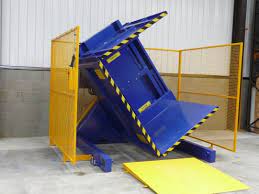
A Game of Speed and Safety
When I first started my own factory, labor was cheap and we did many things by hand. But I quickly learned a lesson that every successful owner like Javier knows: manual labor is not scalable. As orders increased, I couldn't just hire more people indefinitely. The costs, management overhead, and inconsistencies grew faster than the revenue.
The same principle applies to your export process. Let’s compare the two methods:
Manual Transfer:
- Time: 15-25 minutes per pallet.
- Labor: 2-3 workers.
- Risk: High risk of dropping boxes, ergonomic injuries, and inconsistent stacking.
- Throughput: 2-3 pallets per hour, per team.
Pallet Inverter Transfer:
- Time: 1-2 minutes per pallet.
- Labor: 1 worker.
- Risk: Minimal. The load is securely clamped. No manual lifting of individual boxes.
- Throughput: 30-50 pallets per hour, per machine.
For a Vietnamese factory shipping 100 pallets a day, a pallet inverter can save over 30 man-hours every single day. That is labor you can re-assign to more value-added tasks. This isn't just about cost savings; it's about increasing your shipping capacity without increasing your headcount.
Effortless Compliance with ISPM-15
One of the biggest headaches for exporters is regulation. The ISPM-15 standard requires that all solid wood packaging, including pallets, be heat-treated or fumigated to prevent the spread of pests. A shipment arriving in Europe, North America, or Australia on a non-compliant pallet can be quarantined, sent back, or even destroyed—all at your expense. It's a huge financial risk and can damage your reputation with customers.
A pallet inverter makes ISPM-15 compliance simple. You can use any type of pallet you want for your internal operations—durable, untreated wood, plastic, metal—and then, as the very last step before loading the container, switch the load to a certified, stamped ISPM-15 pallet. This removes any chance of error and ensures your shipments clear customs without a hitch.
Protecting Your Product and Your Reputation
Every product that gets damaged during handling is a 100% loss. I worked with a beverage company in Binh Duong Province that was having a major issue. Their cans would get dented and their cartons crushed during the manual transfer to shipping pallets. Their damage rate was nearly 3%. After installing a 180-degree pallet inverter, their damage rate fell to less than 0.1%. The machine's gentle clamping and smooth rotation protected the goods perfectly. The ROI from preventing damage alone paid for the machine in less than a year. Your products represent your brand. Ensuring they arrive in perfect condition is critical.
Why are pallet inverters a strategic investment for Vietnamese businesses?
As a business leader in one of the world's most dynamic economies, you are constantly balancing immense opportunity with intense pressure. The "Made in Vietnam" brand is growing stronger every day, but so is competition. Labor and land costs are rising. To succeed, you can't just work harder; you have to work smarter. You need to make investments that provide a multiplier effect, improving several areas of your business at once.
Simply buying another forklift is a linear solution. Hiring more workers for the shipping department is a temporary fix. A pallet inverter is different. It is a strategic investment because it directly attacks the core growing pains of Vietnamese industry: severe warehouse space constraints, the demands of a booming export market, and the need for greater operational efficiency to control costs. It’s a single piece of equipment that provides a competitive edge for long-term, sustainable growth.
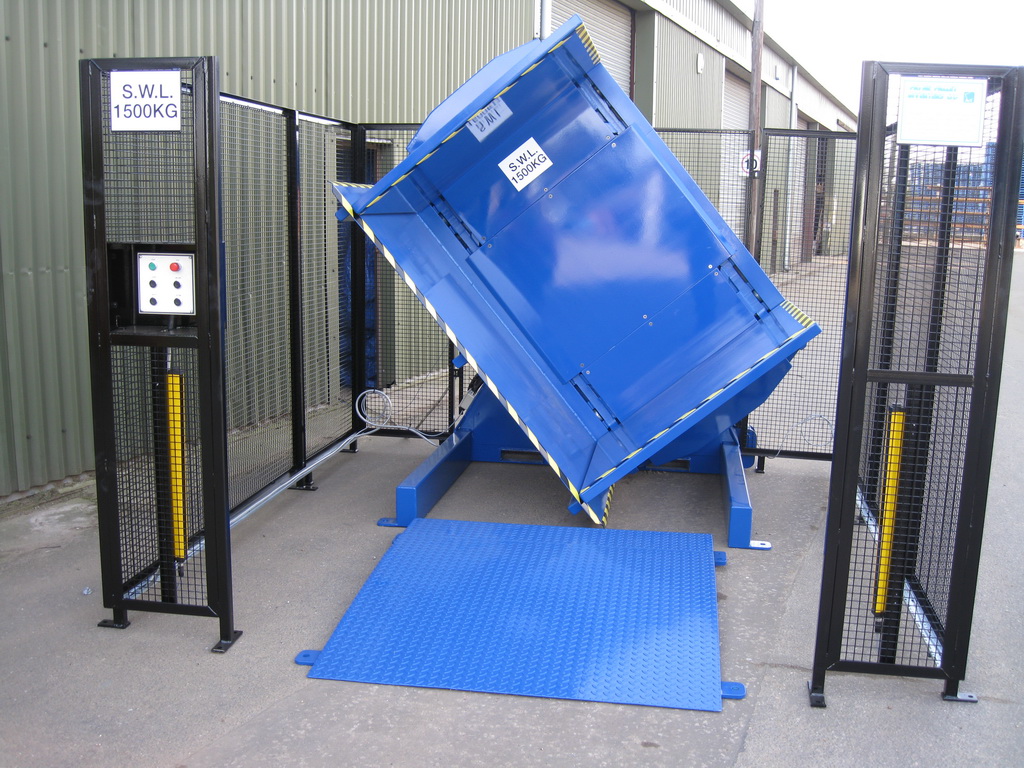
Tackling the Vietnamese Real Estate Challenge
Vietnam's rapid industrialization has sent land prices soaring, especially in key zones around Ho Chi Minh City, Binh Duong, and Haiphong. Warehouse space is at a premium. Every square meter of your facility needs to generate revenue. Using that precious space to store empty wooden pallets is a huge opportunity cost.
A pallet inverter is fundamentally a space-maximization tool. As we discussed, it allows you to hold a much smaller inventory of shipping pallets and re-purpose that storage area for more valuable activities, like production, quality control, or holding more finished goods inventory to meet fluctuating demand. In a market where expansion is costly and difficult, optimizing the space you already have is the smartest financial move.
Fueling the Export Engine
Vietnam is an export powerhouse. Your international customers have high standards for delivery speed and product quality. A pallet inverter is an engine for your export operations.
- Speed: It dramatically increases how many pallets you can prepare for shipment per hour.
- Quality: It protects your products from handling damage, ensuring they arrive in pristine condition.
- Compliance: It makes meeting international standards like ISPM-15 foolproof.
When I founded SHJLPACK, my mission was to provide total solutions. I learned that our clients weren't just buying a wrapping machine; they were buying the ability to ship their products safely and efficiently. A pallet inverter is a critical part of that total solution. It ensures that the product, which has been carefully manufactured and packaged, makes it through the final logistical step without issue.
Future-Proofing for Automation
The trend in manufacturing is clear: more automation, less manual labor. This is how companies increase consistency, reduce errors, and control costs. A pallet inverter is an essential step on this journey. It can start as a standalone, forklift-fed machine. But it is designed for integration. As your business grows, it can be connected with conveyors, stretch wrappers, and strapping machines to create a fully automated end-of-line packaging system. Investing in a pallet inverter today is not just solving today's problems; it's building the foundation for tomorrow's automated warehouse. It positions your company as a forward-thinking leader, ready for the next phase of industrial evolution in Vietnam.
What should you consider when choosing a pallet inverter for your facility?
You're now convinced that a pallet inverter could be a valuable asset for your operation. But the journey doesn't end there. When you start looking, you'll find a wide variety of models, features, and suppliers. Choosing the right one is critical. A machine that is undersized for your loads can be a safety hazard. A machine that is too slow can become your new bottleneck. And a machine from an unreliable supplier can cause massive downtime, halting your entire shipping operation. The selection process can feel overwhelming.
As an engineer, I believe in a systematic approach. You don't need to be a machine expert, but you do need to ask the right questions. By carefully considering four key factors—load specifications, automation needs, application, and supplier reliability—you can cut through the noise and select a pallet inverter that will be a reliable workhorse for your facility for years to come.
When choosing a pallet inverter, you must analyze your specific operational needs. First, evaluate your load capacity, including the maximum weight and dimensions (L x W x H) of your pallets. Second, determine the required throughput and level of automation, deciding between a flexible freestanding model or a high-speed, fully integrated in-line system. Third, clarify the primary application—is it for pallet exchange, damage recovery, or specialized tasks like freezer spacer removal? Finally, and most importantly, assess the manufacturer's reliability and the quality of their after-sales support.
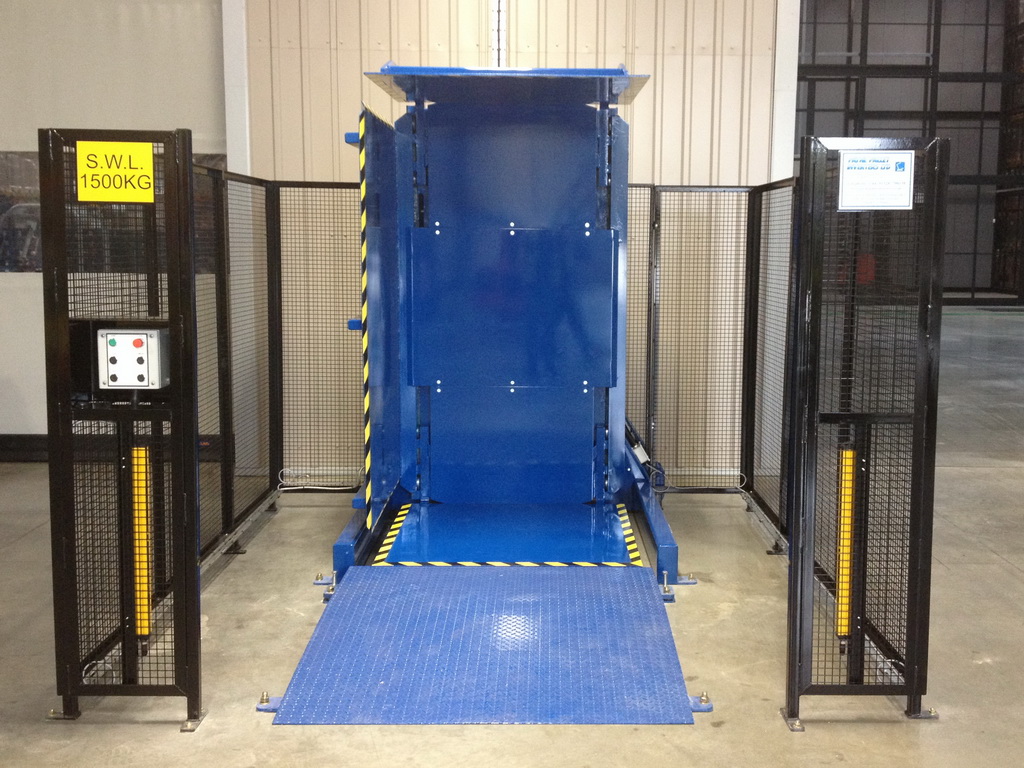
Matching the Machine to Your Load
This is the most fundamental step. You need a machine that can handle your heaviest and largest loads safely.
- Capacity: What is the maximum weight of a fully loaded pallet you handle? Always choose a machine with a capacity at least 20-25% higher than your maximum load to ensure a safety margin and long-term durability.
- Dimensions: What are the length, width, and height of your loads? This determines the size of the machine's opening or "jaw." Consider your tallest possible pallet load.
- Load Type: Are you handling stable, uniform boxes? Or are your loads more delicate or unstable, like bags of cement, bottles, or pails? Different load types may require different clamping pressures or specialized platforms to ensure they are held securely without being crushed. A good supplier will ask about your product, not just the weight.
Deciding on the Right Level of Automation
Your required throughput will determine the best machine configuration. There are two main approaches:
| Feature | Freestanding (Forklift-Loaded) | In-Line (Conveyor-Fed) |
|---|---|---|
| Operation | An operator uses a forklift to load and unload each pallet. | The machine is part of a conveyor line; pallets feed in and out automatically. |
| Speed | 20-30 cycles per hour. | 50-60+ cycles per hour. |
| Flexibility | High. Can be placed anywhere in the warehouse and handle various tasks. | Low. It is fixed in one location as part of a dedicated process. |
| Footprint | Smaller initial footprint, but requires clear space for forklift access. | Larger footprint as part of a longer automated line. |
| Best For | Operations with varied needs and lower-to-medium throughput. | High-volume, repetitive operations like a dedicated export packaging line. |
The Importance of a True Partner
This is the part that I am most passionate about. I built my company, SHJLPACK, on the belief that we are more than just equipment sellers. We are a knowledge-sharing platform and a partner in our clients' success. When you choose a supplier, you are starting a long-term relationship.
Look for a partner, not just a vendor. A partner, like Javier's ideal collaborator, will take the time to understand your business—your products, your challenges, and your goals. They will provide more than a quote; they will provide a solution. They will support you through installation, provide thorough training for your operators, and have a reliable system for providing spare parts and technical support. A machine is only as good as the support that stands behind it. My journey from an engineer to a factory owner taught me that downtime is the ultimate enemy. A reliable partner is your best defense.
Conclusion
A pallet inverter is not just another machine. It is a strategic tool that directly solves the critical issues of space, speed, and cost for growing Vietnamese exporters.


